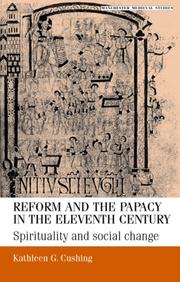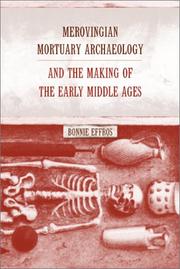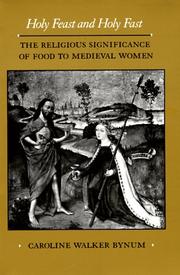| Listing 1 - 5 of 5 |
Sort by
|
Book
ISBN: 1641892412 1641892404 Year: 2019 Publisher: Leeds : ARC Humanities Press,
Abstract | Keywords | Export | Availability | Bookmark
 Loading...
Loading...Choose an application
- Reference Manager
- EndNote
- RefWorks (Direct export to RefWorks)
New research methods allow us to explore how relics of the material culture of the medieval north can confront, corroborate, or disprove the depiction of social norms in the Old Norse-Icelandic literary corpus, which remains the most important source of our present-day knowledge of social development in the Viking Age and medieval Scandinavia. This interdisciplinary volume considers in depth how social values such as reputation, honour, and friendship, were integral to the development of rituals, customs, religion, literature, and language in the medieval North.
Scandinavia --- Fennoscandia --- Norden --- Nordic countries --- Civilization --- History. --- History --- HISTORY / Europe / Scandinavia. --- Icelandic sagas. --- Vikings. --- medieval Scandinavia. --- medieval society. --- social norms. --- To 1397

ISBN: 1526148315 9781526148315 9780719058332 9780719058349 Year: 2005 Publisher: Manchester : Manchester University Press,
Abstract | Keywords | Export | Availability | Bookmark
 Loading...
Loading...Choose an application
- Reference Manager
- EndNote
- RefWorks (Direct export to RefWorks)
"This book explores the relationship between the papacy and reform against the backdrop of social and religious change in later tenth and eleventh-century Europe. Placing this relationship in the context of the debate about 'transformation', it reverses the recent trend among historians to emphasise the reform developments in the localities at the expense of those being undertaken in Rome. It focuses on how the papacy took an increasingly active part in shaping the direction of both its own reform and that of society, whose reform became an essential part of realising its objective of a free and independent Church. It also addresses the role of the Latin Church in western Europe around the year 1000, the historiography of reform, the significance of the 'Peace of God' as a reformist movement, the development of the papacy in the eleventh century, the changing attitudes towards simony, clerical marriage and lay investiture, reformist rhetoric aimed at the clergy, and how reformist writings sought to change the behaviour and expectations of the aristocracy. Summarising current literature while presenting a cogent and nuanced argument about the complex nature and development of reform, this book will be invaluable for an undergraduate and specialist audience alike." --Back cover.
Church renewal --- Christian sociology --- Papacy --- Catholic Church --- History --- Christian society. --- ecclesiastical reform. --- eleventh-century Europe. --- medieval society. --- papal-sponsored movement. --- peace of God movement. --- reform movement. --- religious revolution. --- social revolution. --- tenth-century Europe.
Book
ISBN: 1282556274 9786612556272 0520944577 9780520944572 6612556277 0520257278 9780520257276 9781282556270 Year: 2009 Publisher: Berkeley : University of California Press,
Abstract | Keywords | Export | Availability | Bookmark
 Loading...
Loading...Choose an application
- Reference Manager
- EndNote
- RefWorks (Direct export to RefWorks)
This pioneering study examines a pivotal period in the history of Europe and the Near East. Spanning the ancient and medieval worlds, it investigates the shared ideal of sacred kingship that emerged in the late Roman and Persian empires. This shared ideal, while often generating conflict during the four centuries of the empires' coexistence (224-642), also drove exchange, especially the means and methods Roman and Persian sovereigns used to project their notions of universal rule: elaborate systems of ritual and their cultures' visual, architectural, and urban environments. Matthew Canepa explores the artistic, ritual, and ideological interactions between Rome and the Iranian world under the Sasanian dynasty, the last great Persian dynasty before Islam. He analyzes how these two hostile systems of sacred universal sovereignty not only coexisted, but fostered cross-cultural exchange and communication despite their undying rivalry. Bridging the traditional divide between classical and Iranian history, this book brings to life the dazzling courts of two global powers that deeply affected the cultures of medieval Europe, Byzantium, Islam, South Asia, and China.
Monarchy --- Rites and ceremonies --- Sassanids --- Social aspects --- Social life and customs. --- Rome --- Iran --- Relations --- Kings and rulers. --- ancient history. --- ancient rome. --- ancient societies. --- ancient world. --- art. --- byzantium. --- china. --- classical heritage. --- classical history. --- court life. --- engaging. --- europe. --- global politics. --- global powers. --- historical. --- iranian history. --- islam. --- kingship. --- medieval europe. --- medieval society. --- medieval times. --- near east. --- nonfiction study. --- persian empire. --- pivotal period. --- political history. --- roman empire. --- rome. --- royal intrigue. --- royalty. --- sacred kingship. --- sasanian iran. --- south asia.

ISBN: 1282356704 9786612356704 0520928180 1597347434 9780520928183 0585467803 9780585467801 9780520232440 0520232445 9781597347433 0520232445 9781282356702 6612356707 Year: 2003 Publisher: Berkeley : University of California Press,
Abstract | Keywords | Export | Availability | Bookmark
 Loading...
Loading...Choose an application
- Reference Manager
- EndNote
- RefWorks (Direct export to RefWorks)
Clothing, jewelry, animal remains, ceramics, coins, and weaponry are among the artifacts that have been discovered in graves in Gaul dating from the fifth to eighth century. Those who have unearthed them, from the middle ages to the present, have speculated widely on their meaning. This authoritative book makes a major contribution to the study of death and burial in late antique and early medieval society with its long overdue systematic discussion of this mortuary evidence. Tracing the history of Merovingian archaeology within its cultural and intellectual context for the first time, Effros exposes biases and prejudices that have colored previous interpretations of these burial sites and assesses what contemporary archaeology can tell us about the Frankish kingdoms. Working at the intersection of history and archaeology, and drawing from anthropology and art history, Effros emphasizes in particular the effects of historical events and intellectual movements on French and German antiquarian and archaeological studies of these grave goods. Her discussion traces the evolution of concepts of nationhood, race, and culture and shows how these concepts helped shape an understanding of the past. Effros then turns to contemporary multidisciplinary methodologies and finds that we are still limited by the types of information that can be readily gleaned from physical and written sources of Merovingian graves. For example, since material evidence found in the graves of elite families and particularly elite men is more plentiful and noteworthy, mortuary goods do not speak as directly to the conditions in which women and the poor lived. The clarity and sophistication with which Effros discusses the methods and results of European archaeology is a compelling demonstration of the impact of nationalist ideologies on a single discipline and of the struggle toward the more pluralistic vision that has developed in the post-war years.
Funeral rites and ceremonies --- Merovingians --- Funerals --- Mortuary ceremonies --- Obsequies --- Manners and customs --- Rites and ceremonies --- Burial --- Cremation --- Cryomation --- Dead --- Mourning customs --- Funeral rites and ceremonies. --- France --- Gaul --- Gallia --- Gaule --- History --- Antiquities. --- Social life and customs. --- Funeral customs and rites. --- Merovingians - Funeral rites and ceremonies --- Funeral rites and ceremonies - Gaul --- Gaul - Social life and customs --- Gaul - Antiquities --- France - History - To 987 --- ancient world. --- anthropology. --- antiquity. --- archaeology. --- aregund. --- art history. --- burial. --- celtic world. --- ceremonies. --- childeric. --- class. --- customs. --- dark ages. --- death. --- dying. --- early middle ages. --- europe. --- excavations. --- france. --- frankish kingdoms. --- french history. --- funerals. --- funerary. --- gaul. --- grave artifacts. --- graves. --- history. --- medieval history. --- medieval society. --- medieval. --- merovingian archaeology. --- merovingian graves. --- merovingians. --- monarchy. --- mortuary. --- nation. --- nonfiction. --- race. --- religion. --- rites. --- royalty. --- rulers. --- saint brice. --- social science. --- sociology. --- tombs.

ISBN: 0520057228 0520063295 128007891X 9786613520180 0520908783 0585326487 9780520908789 9780585326481 9780520057227 9780520063297 9781280078910 6613520187 Year: 1987 Volume: vol 1 Publisher: Berkeley : University of California Press,
Abstract | Keywords | Export | Availability | Bookmark
 Loading...
Loading...Choose an application
- Reference Manager
- EndNote
- RefWorks (Direct export to RefWorks)
In the period between 1200 and 1500 in western Europe, a number of religious women gained widespread veneration and even canonization as saints for their extraordinary devotion to the Christian eucharist, supernatural multiplications of food and drink, and miracles of bodily manipulation, including stigmata and inedia (living without eating). The occurrence of such phenomena sheds much light on the nature of medieval society and medieval religion. It also forms a chapter in the history of women. Previous scholars have occasionally noted the various phenomena in isolation from each other and have sometimes applied modern medical or psychological theories to them. Using materials based on saints' lives and the religious and mystical writings of medieval women and men, Caroline Walker Bynum uncovers the pattern lying behind these aspects of women's religiosity and behind the fascination men and women felt for such miracles and devotional practices. She argues that food lies at the heart of much of women's piety. Women renounced ordinary food through fasting in order to prepare for receiving extraordinary food in the eucharist. They also offered themselves as food in miracles of feeding and bodily manipulation. Providing both functionalist and phenomenological explanations, Bynum explores the ways in which food practices enabled women to exert control within the family and to define their religious vocations. She also describes what women meant by seeing their own bodies and God's body as food and what men meant when they too associated women with food and flesh. The author's interpretation of women's piety offers a new view of the nature of medieval asceticism and, drawing upon both anthropology and feminist theory, she illuminates the distinctive features of women's use of symbols. Rejecting presentist interpretations of women as exploited or masochistic, she shows the power and creativity of women's writing and women's lives.
Food --- Women --- Food habits --- Aliments --- Femmes --- Habitudes alimentaires --- Religious aspects --- Christianity --- History --- Aspect religieux --- Christianisme --- Histoire --- Social history --- Eglise catholique --- History of doctrines --- 248.153.4 --- 396 "04/14" --- -Social history --- -Food --- -Food habits --- -Eating --- Food customs --- Foodways --- Human beings --- Habit --- Manners and customs --- Diet --- Nutrition --- Oral habits --- Foods --- Dinners and dining --- Home economics --- Table --- Cooking --- Dietaries --- Gastronomy --- Descriptive sociology --- Social conditions --- Sociology --- Human females --- Wimmin --- Woman --- Womon --- Womyn --- Females --- Femininity --- Vasten. Versterving. Onthouding --- Feminisme. Vrouwenbeweging. Vrouw en maatschappij--Middeleeuwen --- -Religious aspects --- -Christianity --- -History of doctrines --- -History --- -Vasten. Versterving. Onthouding --- 396 "04/14" Feminisme. Vrouwenbeweging. Vrouw en maatschappij--Middeleeuwen --- 248.153.4 Vasten. Versterving. Onthouding --- Christianity. --- -248.153.4 Vasten. Versterving. Onthouding --- Eating --- History of civilization --- Christian spirituality --- anno 1200-1499 --- Middle Ages, 500-1500 --- Primitive societies --- Food - Religious aspects - Christianity --- Women - History - Middle Ages, 500-1500 --- Food habits - History --- Aliments - Aspect religieux - Eglise catholique --- Femmes - Histoire - 500-1500 (Moyen Age) --- Habitudes alimentaires - Histoire --- Food - Religious aspects - Christianity - History of doctrines - Middle Ages, 600-1500 --- Social history - Medieval, 500-1500 --- Food habits - History - To 1500 --- anthropology. --- catholicism. --- devotional practices. --- eucharist. --- fasting. --- feminism. --- feminist theory. --- food studies. --- food. --- gender studies. --- gender. --- historiography. --- history. --- inedia. --- medieval asceticism. --- medieval religion. --- medieval society. --- medieval women. --- middle ages. --- miracles. --- mysticism. --- nonfiction. --- piety. --- religion. --- religiosity. --- religious studies. --- religious vocation. --- religious women. --- renunciation. --- saints lives. --- saints. --- stigmata. --- symbolism. --- western europe. --- women and religion. --- womens lives. --- womens studies. --- womens writing. --- world history. --- MEDIEVAL CIVILIZATION --- WOMEN --- HABITUDES ALIMENTAIRES --- HISTORY --- MIDDLE AGES, 500-1500 --- MOYEN AGE
| Listing 1 - 5 of 5 |
Sort by
|

 Search
Search Feedback
Feedback About
About Help
Help News
News